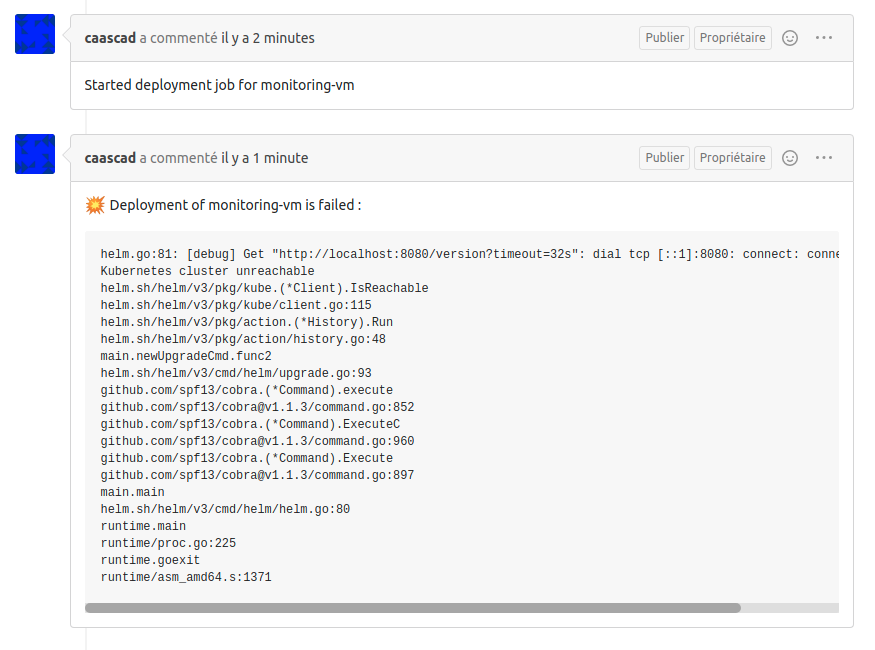GitOps workflow¶
To facilitate the use of some Caascad functionalities, fully automated GitOps workflows are implemented in customer administration environment.
The features available for use through these workflows are:
monitoring-vm: controls the deployment of all necessary configurations for virtual machines monitoring. More info for this customer environment specific feature here.grafana-dashboards: controls the deployment of optional dashboards that are maintained by Caascad teams. More info for this global feature here.
Note
In this tutorial, please replace the following values:
ZONE_NAMEwith the name of the administrative zone (it starts withocb-).CUSTOMER_ENVIRONMENTwith the name of the target customer environment.
Git repositories¶
To store features configurations files, several Git repositories are provided in your Git instance.
https://git.ZONE_NAME.caascad.com/caascad-samples/configurations
Contains samples files for all features available through GitOps workflow
https://git.ZONE_NAME.caascad.com/caascad-global/configurations
This repository stores the configurations of global features like grafana-dashboards
https://git.ZONE_NAME.caascad.com/caascad-CUSTOMER_ENVIRONMENT/configurations
These repositories (one for each CUSTOMER_ENVIRONMENT) store the configurations of customer environment specific features like monitoring-vm.
How to¶
For each global or customer environment specific feature, implemented GitOps workflow works in the same way. Here is the description of the steps to follow.
-
Create a new branch from master
Note that in each repository
masterbranch is protected by default, therefore only validated pull requests can be merged into master. -
Create
<feature_name>.yamlfileConfiguration files examples for each feature can be found in
caascad-samples/configurationsrepository. -
Commit in a new branch and create a new pull request to master branch
An internal CI/CD pipeline will be triggered: it will check the configuration file and will add a comment in your pull request with the result of validation.
If everything is correct, you will see these comments in the pull request (example with
monitoring-vmfeature):
If validation fails, you will see these comments in the pull request:

A pull request that was not validated by the CI is not mergeable.
Tip
If you don't see this message
Started validation job for <feature_name>, amend your commit to update your pull request. -
Make corrections if necessary and update your branch
-
Merge the pull request in master
An internal CI/CD pipeline will be triggered: it deploys all necessary configurations and adds a comment in pull request with the result of deployment.
If everything went well, you will see these comments in the pull request (example with
monitoring-vmfeature):
If not, you will see these comments in the pull request:

Tip
If deployment fails, and the problem has been identified and fixed, you can make a commit without modification by doing
git commit --allow-empty -m "Trigger job for <feature_name>.yaml"and redo the workflow (pull request, merge).